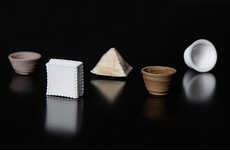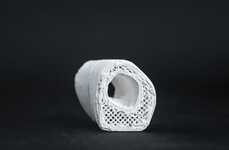
Researchers Have Developed Bio-Ink That Can Be Shaped into Human Corneas
Among the many benefits of 3D printing, from construction to retail, the impact that the technology can have on the medical industry is among the most important, and researchers from Newcastle University have developed a type of 'bio-ink' that shows just how powerful 3D printing can be. The researchers have managed to use this bio-ink to create 3D-printed human corneas, potentially ensuring an unlimited supply of the crucial element of the eye in the future.
The cornea is the outermost layer of the eye, and it's largely responsible for focusing vision. Infectious disorders that impact the cornea, such as trachoma, are relatively common, with an estimated 10 million cases worldwide. This, in turn, means that there is a significant shortage of donor corneas available. By enabling the 3D printing of corneas with bio-ink, the Newcastle University professors have created a simple and sustainable way to address that shortage.
Image Credit: Newcastle University
The cornea is the outermost layer of the eye, and it's largely responsible for focusing vision. Infectious disorders that impact the cornea, such as trachoma, are relatively common, with an estimated 10 million cases worldwide. This, in turn, means that there is a significant shortage of donor corneas available. By enabling the 3D printing of corneas with bio-ink, the Newcastle University professors have created a simple and sustainable way to address that shortage.
Image Credit: Newcastle University
Trend Themes
1. 3D Printing in Medicine - The development of bio-ink that can be used to 3D print human corneas showcases the potential of 3D printing in the medical industry.
2. Bio-ink Innovation - The creation of bio-ink that can be shaped into human corneas opens up opportunities for further advancements in bio-ink materials for various medical applications.
3. Sustainable Cornea Solutions - The ability to 3D print human corneas using bio-ink offers a sustainable solution to the shortage of donor corneas in the medical industry.
Industry Implications
1. Medical Technology - The application of 3D printing in medicine, particularly for creating human corneas, presents innovative opportunities for medical technology companies.
2. Biotechnology - The development of bio-ink that can shape into human corneas represents a disruptive innovation opportunity for the biotechnology industry.
3. Ophthalmology - The ability to 3D print human corneas using bio-ink offers a revolutionary solution in the ophthalmology field, providing new possibilities for cornea treatment and vision improvement.
2.6
Score
Popularity
Activity
Freshness























